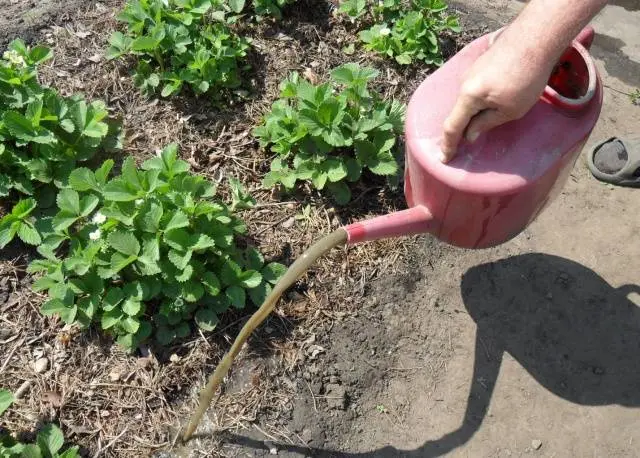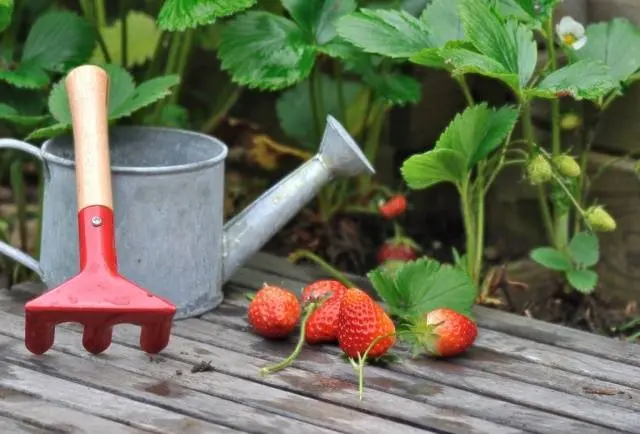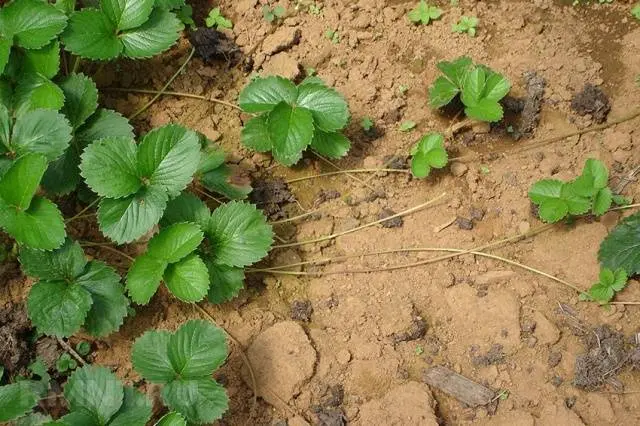Contents
At the mere mention of strawberries, the unusually pleasant taste of summer and the sweet aroma of berries immediately pop up in the memory. It is a pity that strawberries bear fruit for only a couple of weeks a year, because they are considered one of the most delicious garden berries. Recently, remontant varieties of horticultural crops that can produce several crops per season have become increasingly popular, but not every owner wants to get involved with this new product. To prolong the enjoyment of fresh berries, gardeners grow varieties with different ripening periods. One of the latest species is the Borovitskaya strawberry, ripening only by the end of July. This late-ripening variety has a big plus – a great taste of berries, but it also has its drawbacks.
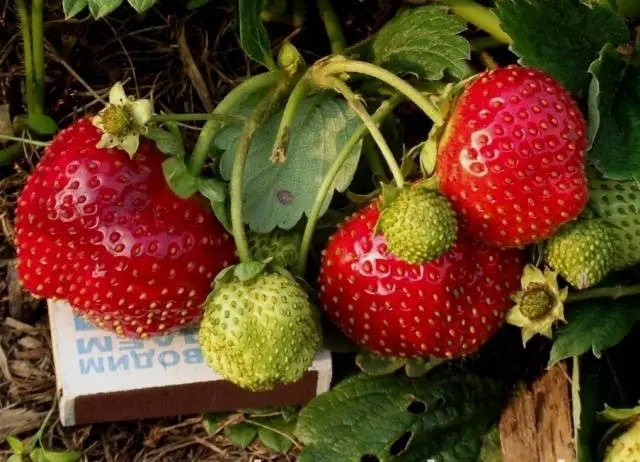
A detailed description of the Borovitskaya strawberry variety, photos of bushes and berries, as well as reviews of gardeners who grow it on their plots, can be easily found in this article. It also provides a brief guide to growing late-ripening garden strawberries and some tips for caring for them.
Characteristics of late strawberries
The Borovitskaya variety was selected in Our Country, crossing two species famous and beloved by gardeners: Nadezhda and Redgauntlet. Received a variety with late maturation is included in the State Register and recommended for cultivation in the Volga-Vyatka and Far East regions.

Full description of the Borovitsky variety:
- medium-sized strawberry bushes, erect, sprawling;
- the shoots are well leafy, there are many rosettes on the bushes;
- leaves are large, dark green, wrinkled;
- inflorescences are large, located above the leaves, so that the berries do not fall on the ground;
- Borovitskaya strawberry flowers are bisexual, which means that the variety does not require additional pollinators;
- peduncles on the bushes are long and thick, covered with a small fluff;
- the set of berries in the variety is good;
- Borovitskaya strawberries give large fruits – the average weight of berries is 40 grams;
- the shape of the berries is correct – a blunt cone with a wide base;
- the neck on the fruit is completely absent;
- the first large berries may have an irregular shape, they often coalesce, voids form inside such strawberries, berries weighing less than 30 grams do not form voids, aligned, beautiful;
- the color of unripe berries is brick red, fully ripe strawberries acquire a cherry red hue;
- the pulp is colored light red, has a dense texture, but contains a lot of juice;
- the taste of Borovitskaya strawberries is very pleasant – sweet with a barely noticeable sourness;
- the aroma is strongly pronounced, leaving a fruity plume;
- the tasting assessment of strawberries of this variety is four points;
- the content of sugars, acids and vitamins is balanced;
- the yield of the Borovitsky variety is high or medium (depending on care);
- about 0,5 kg of berries are usually removed from one bush;
- the variety has immunity to root rot, wilt and medium resistance to gray rot;
- the frost resistance of strawberries is very good – bushes covered only with a layer of snow can withstand up to -35 degrees;
- the purpose of the fruit is universal – Borovitskaya strawberries are considered dessert, therefore they are good fresh, and delicious jams, jams and marmalade are also obtained from the berries.

Pros and cons of garden strawberries
The Borovitskaya strawberry variety cannot be called commercial or industrial, but it is perfect for private cultivation in small gardens and summer cottages.
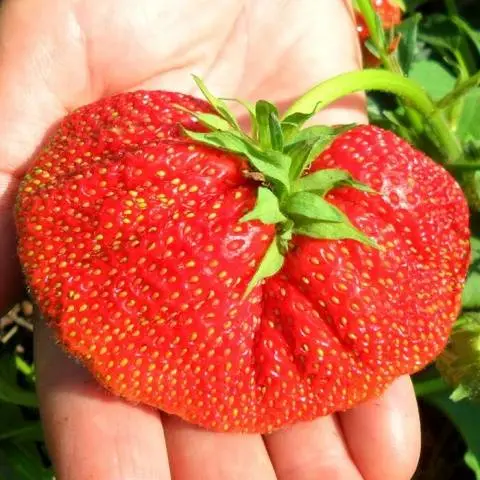
This garden strawberry has many advantages, such as:
- late ripening, allowing you to extend the “strawberry season” and enjoy the fresh taste of berries in the middle of summer;
- late flowering, not endangered during the period of return frosts;
- abundant formation of ovaries, friendly ripening of berries;
- resistance to various climatic conditions: drought, high temperature, high humidity;
- good frost resistance;
- decent enough yield;
- pleasant taste of strawberries and beautiful appearance of berries (not counting the first harvest);
- immunity to putrefactive and bacterial diseases.
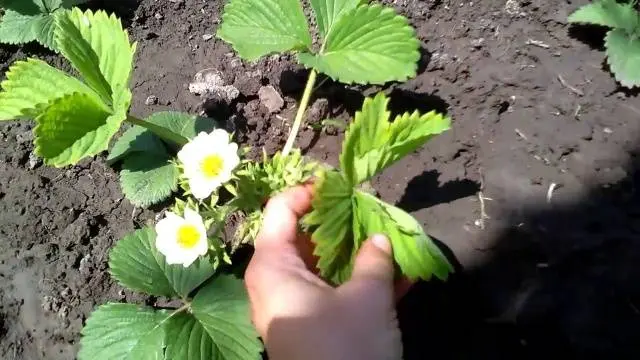
Not all gardeners leave positive feedback about Borovitskaya strawberries, many do not like its disadvantages, including:
- non-industrial yield, due to which Borovitskaya is not grown for commercial purposes;
- in the stage of full ripeness, the berries become very soft and juicy, unsuitable for transportation;
- unripe strawberries are too sour, their taste is far from dessert.
Rules of landing
It is customary to plant strawberries in the middle lane in spring or autumn. But with such a planting, the first crop is lost – garden strawberries will begin to bear fruit only after a year. In order for fruit buds to form as early as possible, it is recommended to plant strawberry seedlings at the end of summer or at the very beginning of autumn.
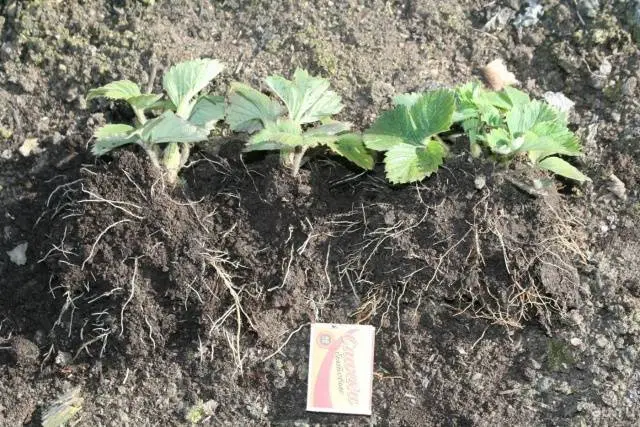
The planting pattern for Borovitskaya is optimal as follows – 25-30 cm between adjacent bushes, about 70-80 cm between rows. Experienced gardeners recommend planting in two lines – it’s easier to care for strawberries and harvest. If the bushes are sheltered for the winter (relevant for the North and regions with snowless winters), Borovitskaya strawberries are planted in 3-4 rows in order to subsequently cover the entire area with agrofiber or other material.
For a good start, Borovitskaya needs high-quality top dressing, so both humus and the mineral complex should be added to the planting holes immediately, mixing fertilizers with the ground.
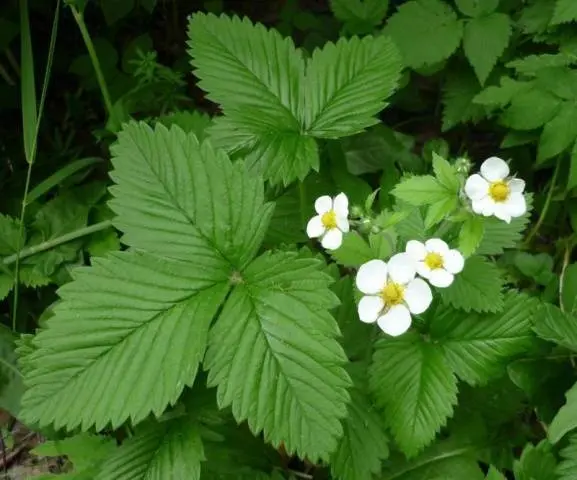
How to care for strawberries
A photo of ripe berries of the Borovitskaya variety will not leave anyone indifferent: the strawberries are very large, cherry-red, glossy, smooth. In order for the harvest to please with abundance and quality, the gardener will have to work hard – a large-fruited late variety loves good care.
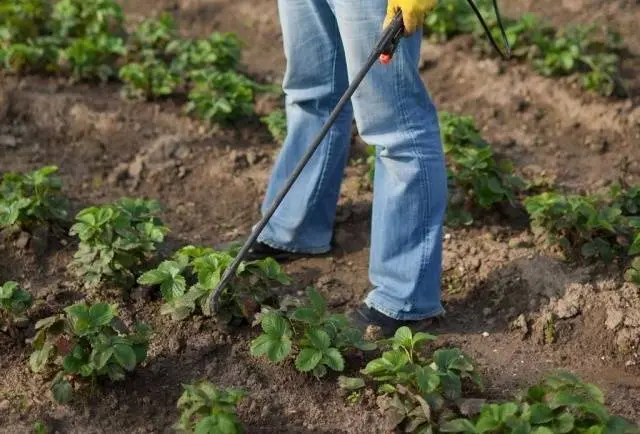
The steps for caring for strawberry beds should be as follows:
- The most important thing is feeding. Like any large berry, Borovitskaya needs careful nutrition. In addition to the initial fertilizer at the planting stage, each season the beds are fed at least three times. In early spring, as soon as the snow melts and the earth warms up a little, ammonia fertilizers are applied. It can be a primitive nitroammophoska or a more expensive complex fertilizer – there is not much difference. At the strawberry flowering stage, foliar feeding is necessary – these are complexes diluted in water with a small part of nitrogen and a good portion of calcium, phosphorus, and potassium. During the ovary, foliar spraying of the bushes is repeated with the same fertilizers, focusing on the mineral components and reducing the amount of nitrogen. At the end of the season, after the last harvest, a mineral complex is introduced into the soil and humus is scattered around the strawberry bushes. Such feeding is needed to restore the strength of large-fruited strawberries and stimulate yields next year.

- Variety Borovitsky tolerates drought well, but this strawberry also needs water. Strawberry beds should be watered regularly, special attention is paid to the bushes during the flowering period. In order not to provoke infection of strawberries with gray rot, the plants are watered under the root, trying not to wet the leaves and berries.
- Borovitskaya strawberries are resistant to diseases and pests, but it is better to treat them with preventive measures. It can be either a special chemical composition or one of the folk methods (wood ash powder, laundry soap solution, etc.).
- Any weeds contribute to the propagation of infections in strawberry bushes, so the grass should be removed regularly. The beds themselves are loosened and weeded after each watering. To make life easier, gardeners can mulch strawberry rows with peat, straw, or sawdust.

- Many gardeners mow strawberry tops before the onset of winter cold. In the case of Borovitskaya, this should not be done – all the forces of the plants will be spent on restoring the green mass. It is quite enough to walk along the rows and clean the bushes from dry, diseased leaves, remove debris from them, and remove weeds.
- Frost-resistant Borovitsky strawberries, as a rule, are not covered for the winter. If, nevertheless, it is necessary, it is better to use pine needles or agrofibre – viruses and bacteria do not multiply in these materials. As soon as snow falls, it must be collected on strawberry beds, trying to create a shelter about 20 cm thick.
- It is easy and cheap to propagate the Borovitsky variety – strawberries give a lot of whiskers, which take root perfectly, creating many outlets.

Write Your Review
Conclusion
The old domestic variety of garden strawberries is not suitable for industrial cultivation, but Borovitskaya strawberries are good in private farms and dachas near Moscow.
This berry is loved for its excellent taste, excellent frost resistance and unpretentiousness. In order for the harvest to be high and the fruits to be large, it is necessary to generously feed the beds and, at least occasionally, water them.










